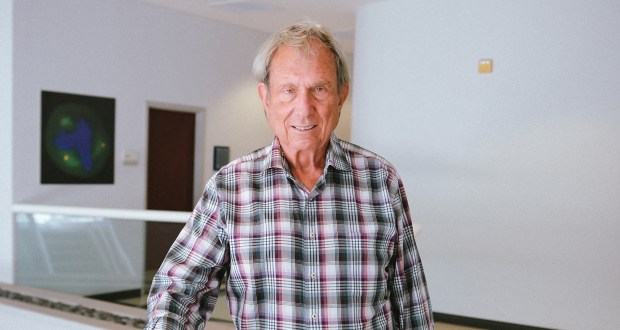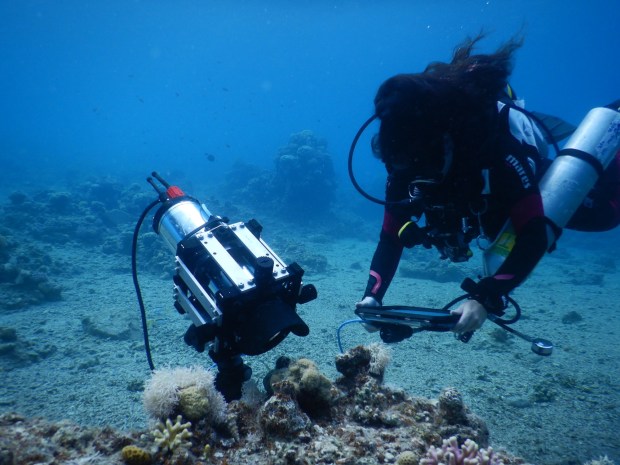Vice President JD Vance reportedly was in La Jolla on July 7 to attend a private fundraising event, with local residents describing a heavy security presence and a helicopter flying overhead.
“It’s a zoo of police … and Highway Patrol,” La Jollan Trace Wilson told the La Jolla Light as he watched the motorcade on Camino de la Costa.
Rumors started over the weekend that Vance would visit La Jolla after his motorcade was seen in San Diego ahead of the Claremont Institute’s Statesmanship Award Dinner, where he received an award July 5. The motorcade also was seen on Adams Avenue in the Uptown area, as well as near Rancho Peñasquitos, where his wife grew up.
The New York Times had reported that Vance would attend a previously unreported roundtable event in San Diego on July 7 but did not provide further details.
Sanford Burnham Prebys welcomes new director of Center for Metabolic and Liver Diseases
Michael Karin has long been fascinated by what happens when inflammation — ideally a short-term burst of biological activity to promote healing or fight infection — turns chronic and potentially deadly.
 Michael Karin has joined Sanford Burnham Prebys in La Jolla as director of the new Center for Metabolic and Liver Diseases. (Sanford Burnham Prebys)
Michael Karin has joined Sanford Burnham Prebys in La Jolla as director of the new Center for Metabolic and Liver Diseases. (Sanford Burnham Prebys)
Bringing that to La Jolla, Karin joined Sanford Burnham Prebys on June 30 and will continue investigating how chronic inflammation can promote tumor formation. He also will be director of the new Center for Metabolic and Liver Diseases.
As director, Karin will lead collaborations among seven laboratories focused on identifying and interpreting the underlying causes and drivers of metabolic and liver diseases. Current therapeutic options for such diseases are limited, ineffective or don’t exist at all, and Karin will spearhead the center’s efforts to find new treatments.
La Jolla lab looking at how to combat mosquito-borne virus
Chronic chikungunya disease strikes 30-60% of those infected with the mosquito-borne virus — usually women — and causes severe joint pain that can last for years.
But a new La Jolla Institute for Immunology study published recently in Nature Communications offers the first map of which parts of the chikungunya virus trigger the strongest response from the body’s disease-fighting T cells.
With this map in hand, researchers are closer to developing chikungunya vaccines or therapies that harness T cells to strike specific targets, or “epitopes,” to halt infection. The new study also offers clues for understanding why many people experience severe joint pain for years after clearing the virus, researchers say.
La Jolla Playhouse announces Innovation Night date
La Jolla Playhouse has announced that this year’s Innovation Night will be held Monday, Oct. 20.
The event each year brings more than 500 business leaders together for an evening of networking and interaction with San Diego’s leading life sciences, biotech, high-tech, clean-tech and defense and telecommunication companies. It also features food, an open bar and a performance inspired by the playhouse’s Without Walls festival.
Innovation Night supports the playhouse’s research and new-work development efforts, including the Without Walls program and artist commissions and residencies.
For ticket information and more, visit lajollaplayhouse.org/support/join-the-party.
Scripps Oceanography scientists develop new coral microscope
Scientists at the La Jolla-based Scripps Institution of Oceanography have developed a new diver-operated microscope called the Benthic Underwater Microscope imaging PAM, or BUMP — to offer an unprecedented look at coral photosynthesis on micro scales.
 The BUMP system is deployed in the Red Sea to image and measure corals. (Or Ben-Zvi)
The BUMP system is deployed in the Red Sea to image and measure corals. (Or Ben-Zvi)
The BUMP system makes it possible to study the health and physiology of coral reefs in their natural habitat, advancing long-standing efforts to uncover why corals “bleach.”
Corals are reef-building animals that can’t photosynthesize on their own. Instead, they rely on microalgae living inside their tissues to do it for them. These symbiotic algae use sunlight, carbon dioxide and water to produce oxygen and energy-rich sugars that support coral growth and reef formation.
When corals are stressed by warming waters or poor environmental conditions, they lose the microalgae, leading to a pale appearance (coral bleaching) and eventual starvation. Scientists don’t fully understand why, and it hasn’t been possible until now to study at appropriate scales in the field.
“This microscope is a huge technological leap in the field of coral health assessment,” said Or Ben-Zvi, a postdoctoral researcher at Scripps Oceanography and lead author of the study. “We now have a tool that allows us to examine these microalgae within the coral tissue, non-invasively and in their natural environment.”
2025 Mainly Mozart All-Star Orchestra Festival rakes in highest net income
The 37-year-old Mainly Mozart All-Star Orchestra Festival returned to San Diego in late June with five dates in La Jolla, three of them at the Baker-Baum Concert Hall and two at UC San Diego’s Epstein Family Amphitheater, and welcomed 4,000 guests and drew the highest net income and second-highest gross income in the festival’s history, according to Mainly Mozart.
The festival featured 70 “all-star” musicians and attracted sold-out crowds for three performances, according to a news release.
Learn more at mainlymozart.org.
Over a third of Californians use cannabis, UCSD study says
Nearly a decade after recreational use of cannabis in California was made legal for adults 21 and older through Proposition 64, a UC San Diego study says more than a third of Californians use the drug but there is a “significant gap” in knowledge about its impacts and potential risks.
The study, published in the journal Cannabis and Cannabinoid Research, says:
• 37% of Californians reported cannabis use within the span of three months, and 58% of them reported daily use
• A majority of participants, 62-82%, reported improvements in emotional, mental and physical health resulting from cannabis use
• 66% of participants reported their physicians were aware of their use. But only 15% turned to medical providers for information or insight about cannabis use.
Researchers said they hope to explore “cannabis-related attitudes, knowledge and practices among medical providers” in future studies.
Ideas sought for new La Jolla Light series
With the busy summer tourism season in full effect, many visitors are looking for the quintessential La Jolla experience.
And so is the La Jolla Light.
For a new series, reporter Ashley Mackin-Solomon is looking to find and do some of the activities that make La Jolla unique. Past experiences include running the 5K as part of the La Jolla Half Marathon and diving in search of leopard sharks in La Jolla Shores.
Email your ideas to ashleym@lajollalight.com. ♦
